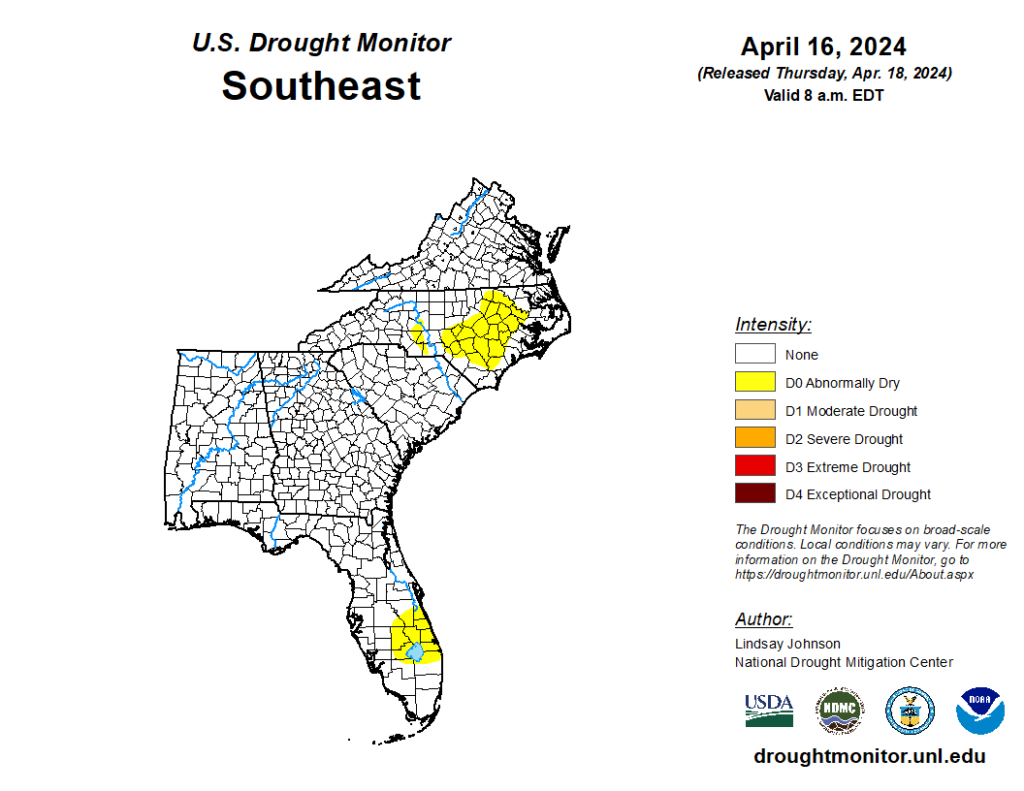
By Clint Thompson
Specialty crop growers knew heading into this season that it had the potential to be cold and wet. In certain areas across the Southeast (SE), this year’s El Niño did not disappoint.
It was so wet across Alabama, Florida and Georgia that the mostly dry conditions that were present last fall quickly disappeared. In the most recent release of the U.S. Drought Monitor, only a handful of areas in the region are experiencing abnormally dry conditions.

“Every El Niño looks a little different because sometimes it drops more rain,” said Pam Knox, University of Georgia (UGA) Extension agricultural climatologist. “We expect it to be wetter than usual. This to me seems like a pretty sustained period of wet conditions. Sometimes it will be wet for a while and then it will dry out, but we have had a lot of storms that have come through this spring. It’s been pretty consistently wet. It’s been extra frustrating to the farmers, because there’s not been any windows for them to go out and do a lot of field work.”
South Georgia Rains
South Georgia has experienced excessive rains for a while now. According to the UGA Weather Network, Tifton, Georgia, has received 11.51 inches of rainfall from March 1 to April 16, compared to just 4.28 in 2023 and 5.82 in 2022. Vidalia, Georgia, received 9.41 inches of rain during that same timeframe, compared to 5.64 last year and 5.06 in 2023.
“It’s a pretty typical El Nino winter for the Southeast. We do expect these wetter-than-usual conditions across a lot of the region, and that’s certainly what we’ve seen this year,” Knox said.










